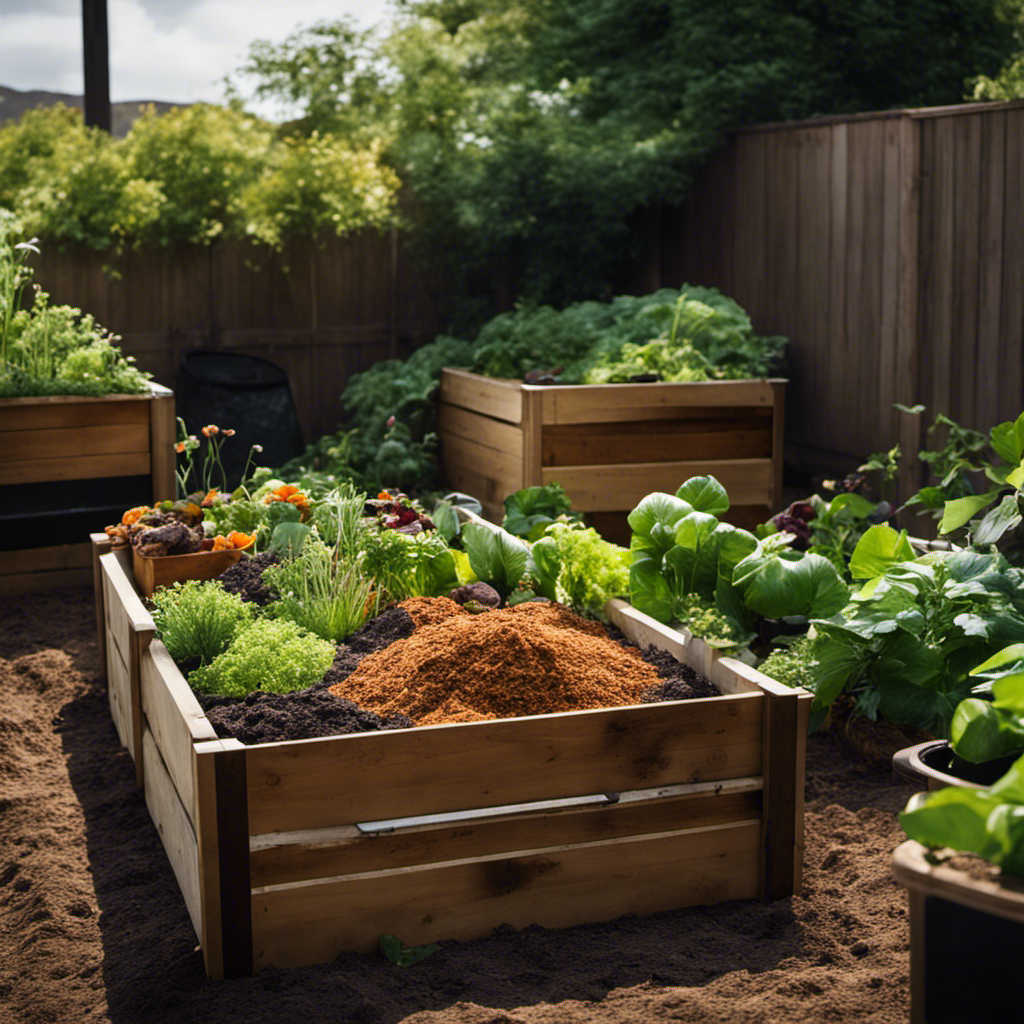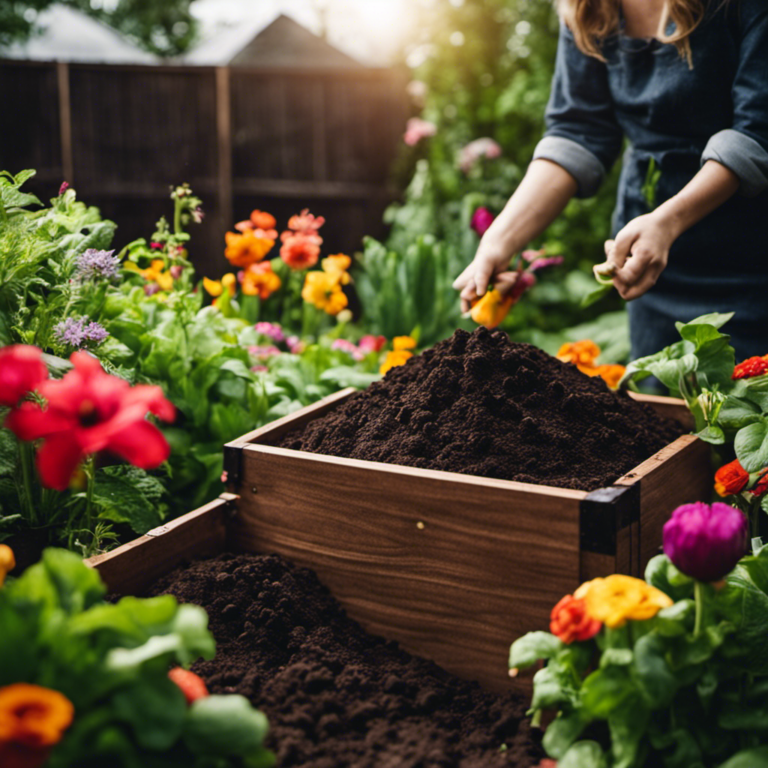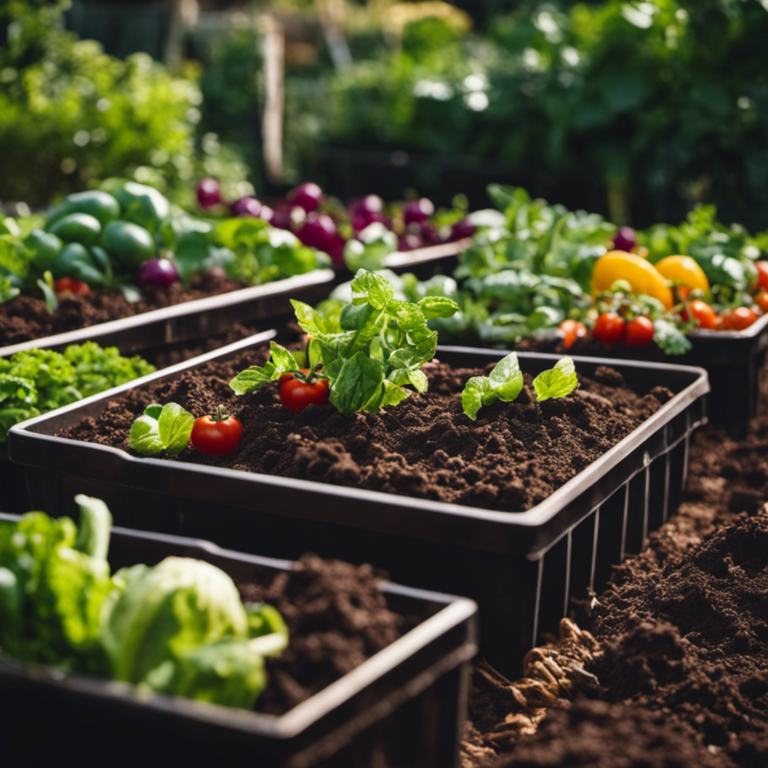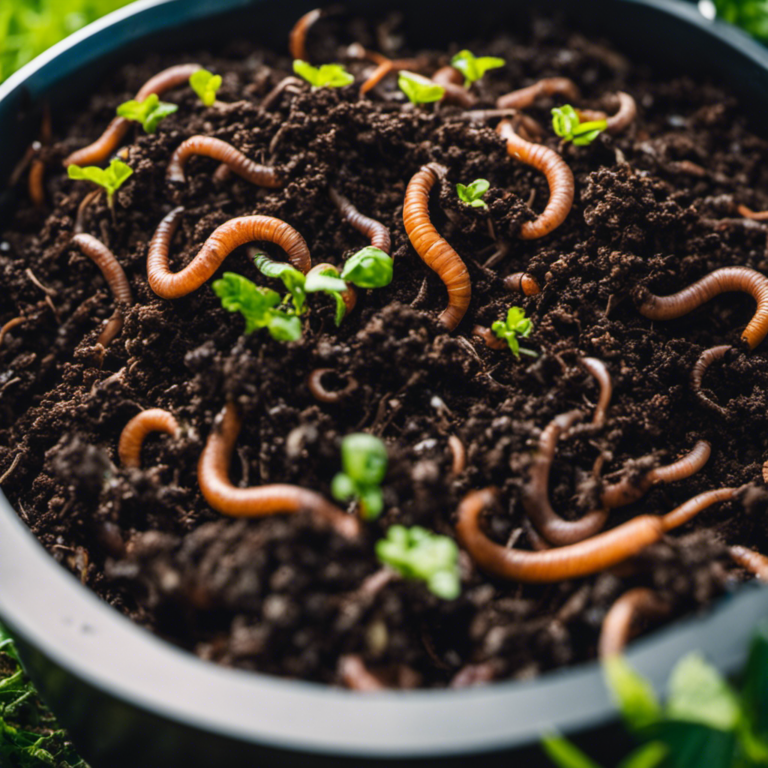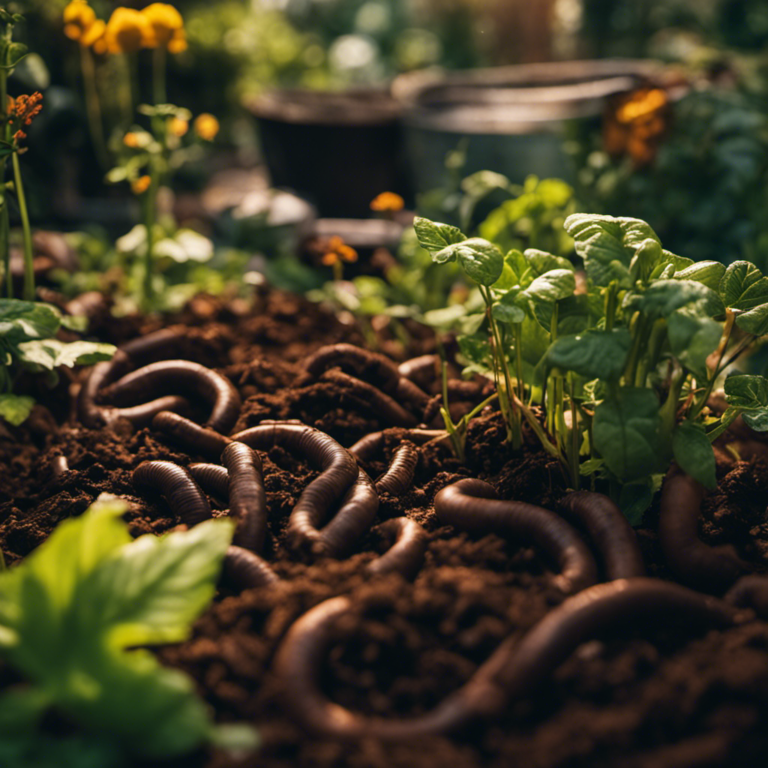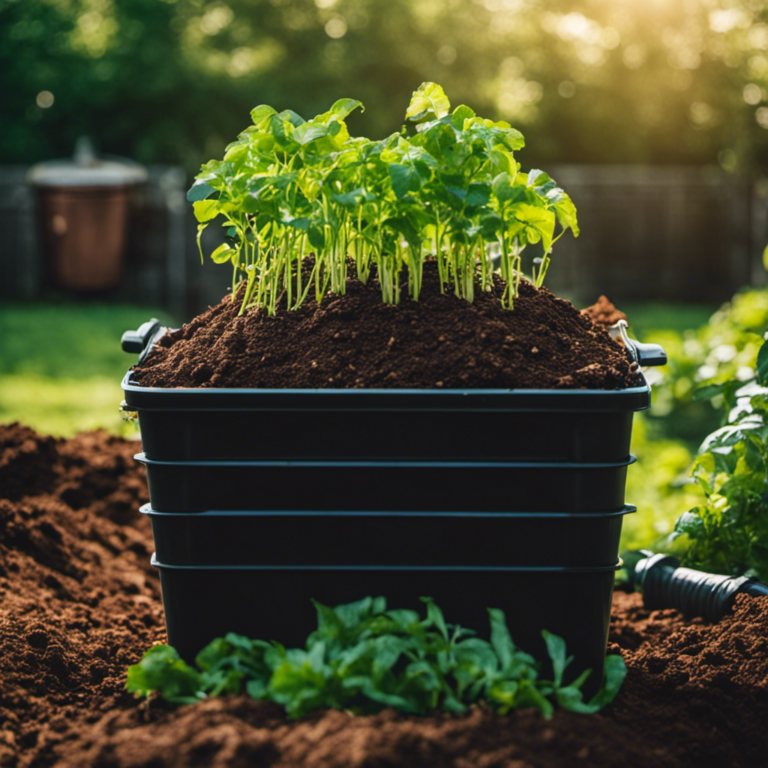I’ve always been passionate about gardening, and composting has been a game-changer for me. Witnessing the transformation of organic waste into nutrient-rich soil is truly magical.
In this article, I will share essential techniques for organic composting to help you get started on your own composting journey. From selecting the right method to troubleshooting common issues, I will provide practical tips to ensure your composting success.
So, let’s dive in and learn how to create nutrient-rich soil for your plants!
Key Takeaways
Composting is not just a simple task in the garden; it is a powerful technique. With the right methods, you can transform your organic waste into a nutrient-rich solution for your plants.
In this beginner’s guide, we will cover everything you need to know about composting, from selecting the appropriate method to managing temperature and moisture levels. By harnessing the wonders of nature, you will witness your garden flourishing like never before.
Let’s embark on a journey into the world of composting together and unlock the potential for a thriving garden. Get ready to embrace the magic of nature in action!
Choosing the Right Composting Method
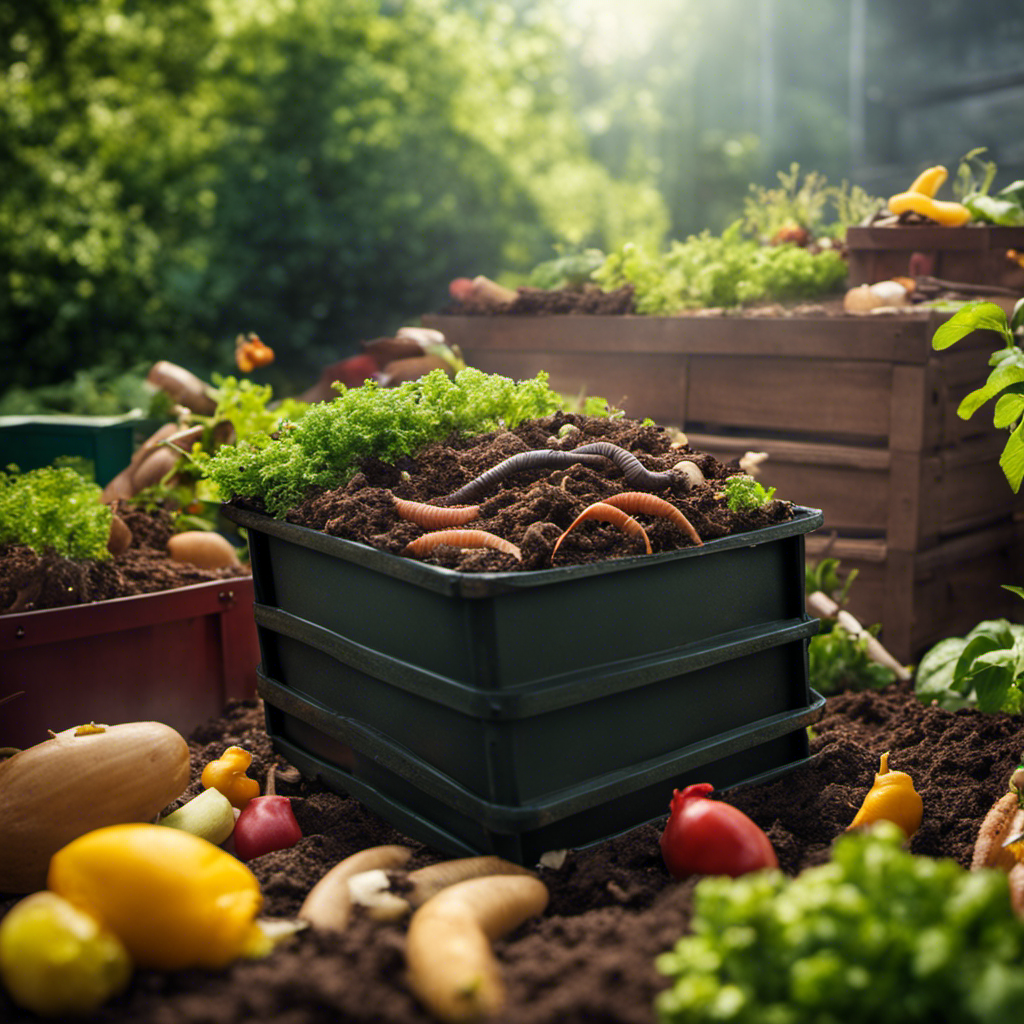
Choosing the Right Composting Method
When starting an organic composting project, it’s helpful to begin by selecting the most suitable composting method for your needs. Two popular methods that you can consider are aerated composting and vermicomposting.
Aerated composting, also known as hot composting, is a method that involves regularly turning the compost pile to introduce oxygen and promote decomposition. This method requires a larger composting area and more effort, but it accelerates the composting process, resulting in faster production of usable compost. It’s ideal for those who’ve a large amount of organic waste and want quick results.
On the other hand, vermicomposting utilizes worms to break down organic materials. This method is perfect for those with limited space, such as apartment dwellers or small-scale gardeners. Worms, like red wigglers, consume organic waste and produce nutrient-rich castings, also known as worm compost. Vermicomposting requires a smaller container or worm bin and is a low-maintenance method that produces excellent compost.
When choosing the right composting method, it’s important to consider factors such as available space, time commitment, and the amount of organic waste generated. Both aerated composting and vermicomposting have their advantages, so it’s essential to select the method that aligns with your specific needs and resources.
Collecting and Preparing Organic Waste
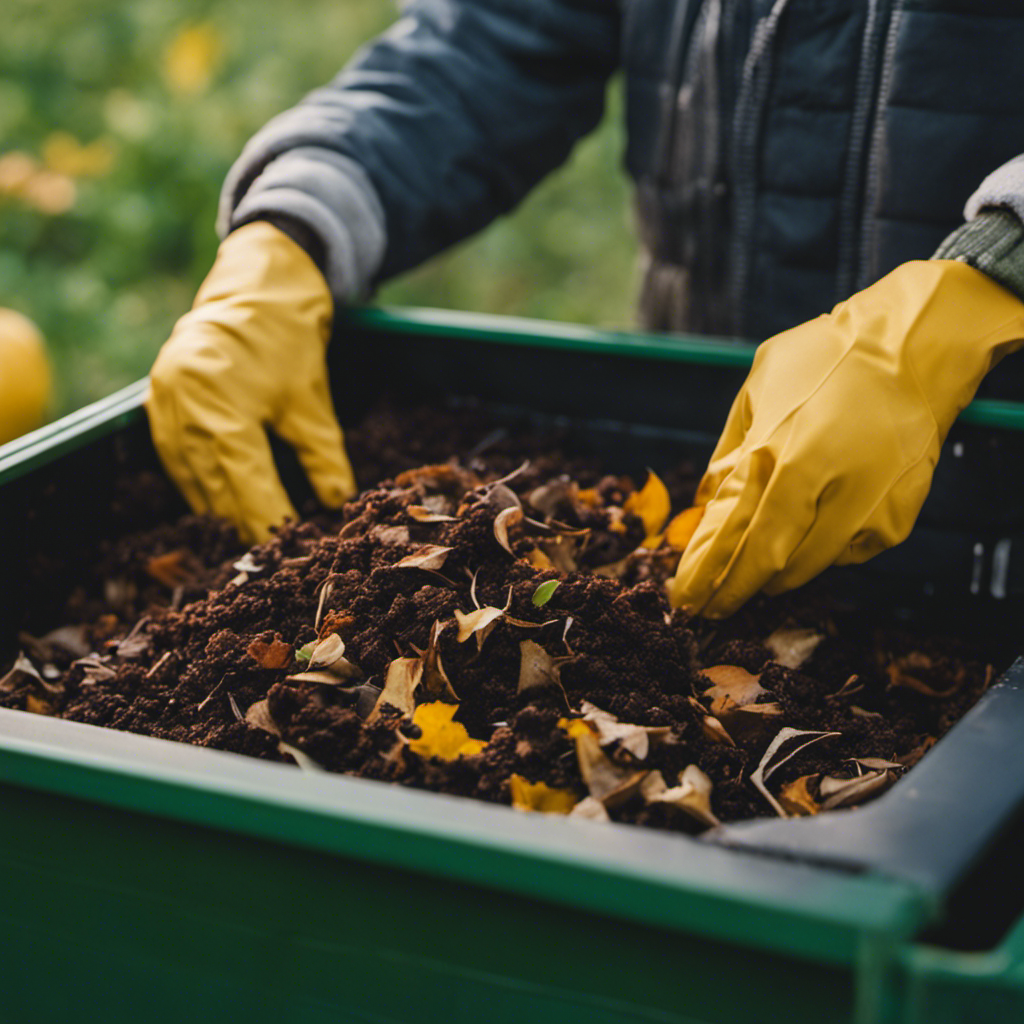
To collect and prepare organic waste for composting, you can start by designating a specific area for waste disposal. This can be as simple as marking off a corner of your backyard or setting up a compost bin or pile. Once you have your designated area, you can begin collecting and preparing your organic waste.
Here are some tips to help you get started:
-
Composting container options:
-
Compost bin: This is a great option for those who want a contained and organized composting system. There are various types of compost bins available, such as plastic bins, wooden bins, and tumblers. Choose one that suits your space and needs.
-
Compost pile: If you have a larger area and prefer a more informal approach, a compost pile can be a simple and effective option. Just remember to turn the pile regularly to ensure proper decomposition.
-
Natural additives for composting:
-
Brown materials: These include dried leaves, straw, and shredded newspaper. They provide carbon and help create a balanced compost pile.
-
Green materials: These include fresh grass clippings, fruit and vegetable scraps, and coffee grounds. They provide nitrogen and help speed up the composting process.
By establishing a designated area and using the right composting container and natural additives, you’ll be well on your way to collecting and preparing organic waste for composting. This not only reduces waste but also helps create nutrient-rich soil for your garden.
Happy composting!
Creating the Perfect Compost Ratio
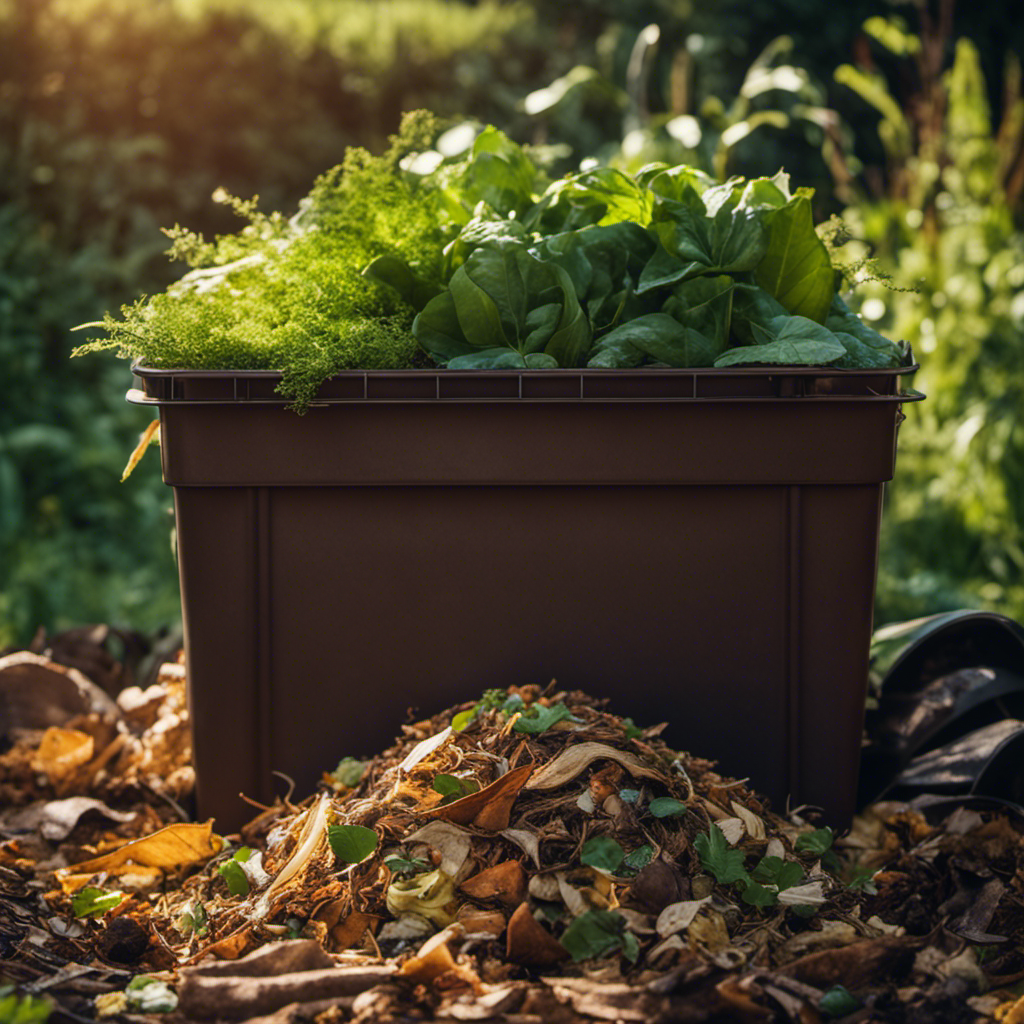
Creating the Perfect Compost Ratio
To achieve the best results when composting, it’s important to establish the ideal compost ratio. This ratio refers to finding the right balance between carbon-rich materials and nitrogen-rich materials in your compost pile. This balance is crucial because it helps break down organic matter effectively, resulting in nutrient-rich compost.
The optimal carbon to nitrogen balance, also known as the C:N ratio, is around 30:1. Carbon-rich materials like dried leaves, straw, and wood chips provide energy for the microorganisms in the compost pile. Nitrogen-rich materials such as kitchen scraps, grass clippings, and manure provide the necessary nutrients for these microorganisms to thrive.
Calculating the C:N ratio involves measuring the amount of carbon and nitrogen in your compost ingredients. Since different materials have different C:N ratios, it’s important to mix a variety of ingredients to achieve the right balance.
In addition to the compost ratio, it’s also crucial to consider the type of composting container you use. There are several options available, such as compost bins, tumblers, and open piles. Each option has its own advantages and disadvantages, so choose one that suits your needs and space constraints.
By establishing the perfect compost ratio and using the right composting container, you can create high-quality compost that will enrich your soil and nourish your plants.
Happy composting!
Managing Temperature and Moisture Levels
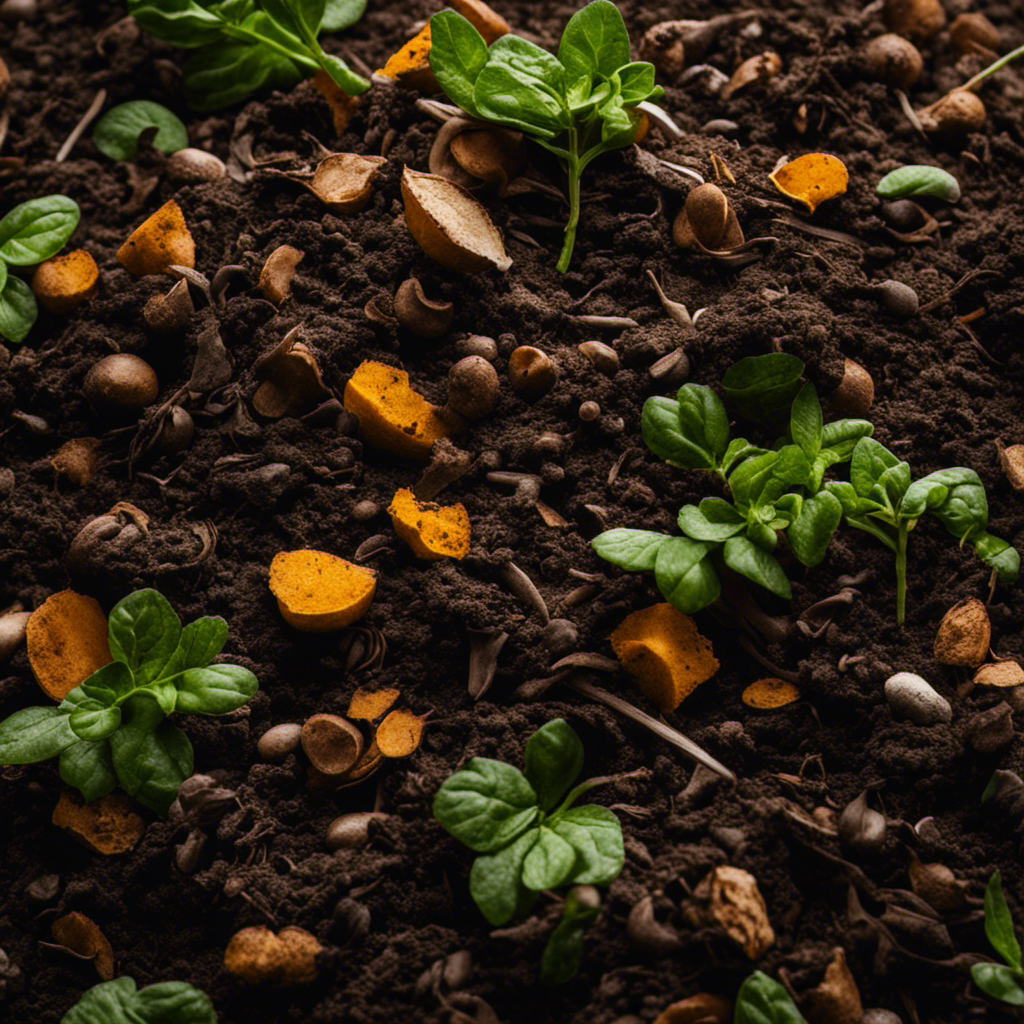
Maintaining the proper temperature and moisture levels in your compost pile is crucial for optimal composting conditions. By effectively managing these factors, you can speed up the decomposition process, control odors, and maximize nutrient content.
Here are some practical tips to help you manage temperature and moisture levels in your compost pile:
Temperature Management:
- Regularly monitor the temperature of your compost pile using a compost thermometer.
- Aim for a temperature range of 130-160°F (54-71°C) to ensure efficient decomposition.
- If the temperature exceeds 160°F (71°C), turn the pile to cool it down and introduce oxygen.
- If the temperature remains below 130°F (54°C), add nitrogen-rich materials or turn the pile to increase microbial activity.
Moisture Management:
- Maintain a moisture level of approximately 40-60% in your compost pile.
- Check the moisture content by squeezing a handful of compost; it should feel similar to a damp sponge.
- If the compost is too dry, add water using a hose or sprinkler system.
- If the compost is too wet, incorporate dry, carbon-rich materials like shredded leaves or straw to improve aeration.
Troubleshooting Common Composting Issues
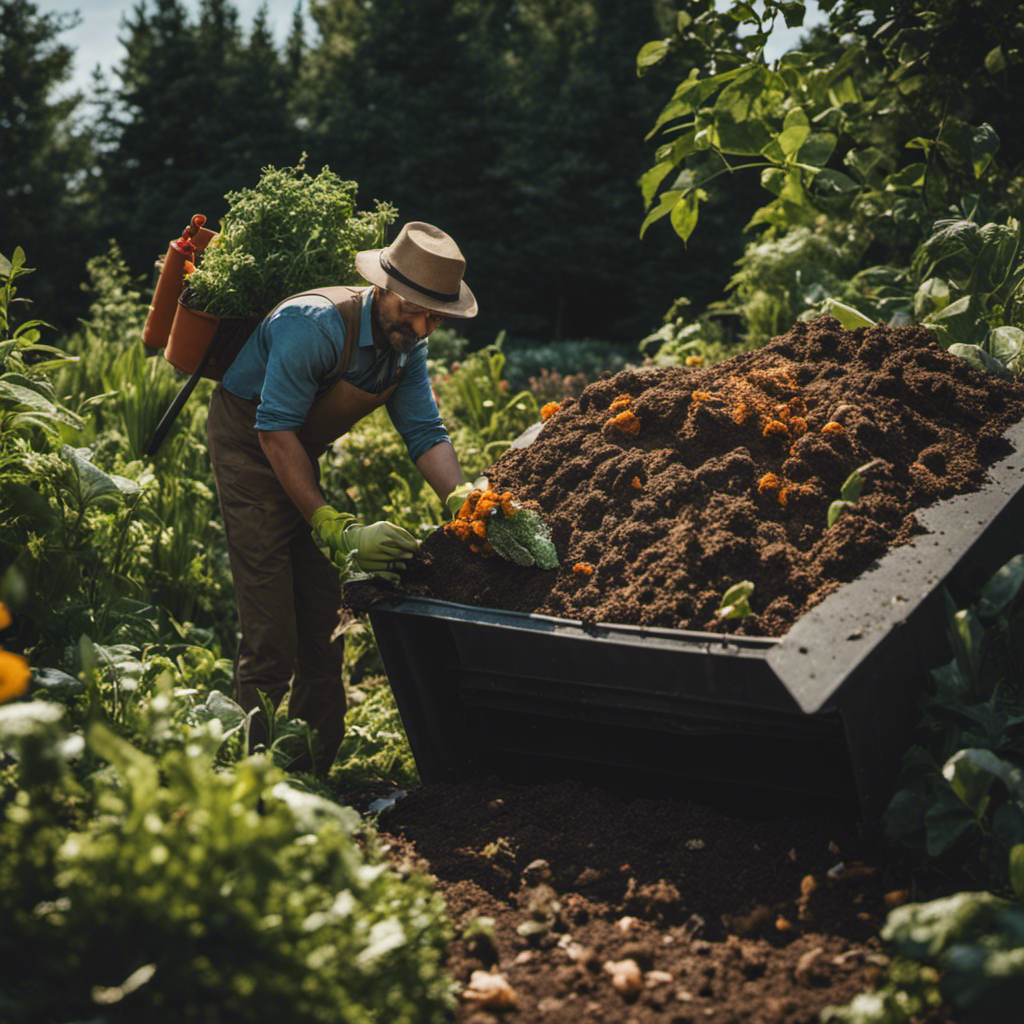
When troubleshooting common composting issues, it’s important to start by identifying the source of the problem. Two common issues that gardeners often face are preventing pests and speeding up decomposition.
Pests like flies, rodents, and ants can be attracted to the compost pile, causing a nuisance and potentially spreading diseases. To prevent pests, make sure to keep the compost pile covered with a layer of straw or a tight-fitting lid. It’s also important to avoid adding meat, dairy, or oily food scraps, as these can attract pests.
Another issue that gardeners may encounter is the slow decomposition of organic materials. To speed up decomposition, it’s important to ensure that the compost pile has a good balance of carbon-rich materials, such as dried leaves or straw, and nitrogen-rich materials, such as kitchen scraps or grass clippings. Regularly turning the compost pile also helps to aerate it and promote faster decomposition.
By following these troubleshooting techniques, you can maintain a healthy and productive compost pile.
| Common Composting Issue | Troubleshooting Technique |
|---|---|
| Pests | Keep compost covered with straw or a lid. Avoid adding meat or oily food scraps. |
| Slow decomposition | Balance carbon-rich and nitrogen-rich materials. Turn the compost pile regularly. |
Conclusion
Composting is more than just a task in the garden, it’s a powerful technique! With the right methods, you can turn your organic waste into a nutrient-rich elixir for your plants.
This beginner’s guide will cover everything you need to know, from choosing the right composting method to managing temperature and moisture levels.
By tapping into the magic of nature, you’ll witness your garden thriving like never before.
So, let’s explore the world of composting together and unlock the potential for a flourishing garden. Get ready to embrace the wonders of nature in action!
